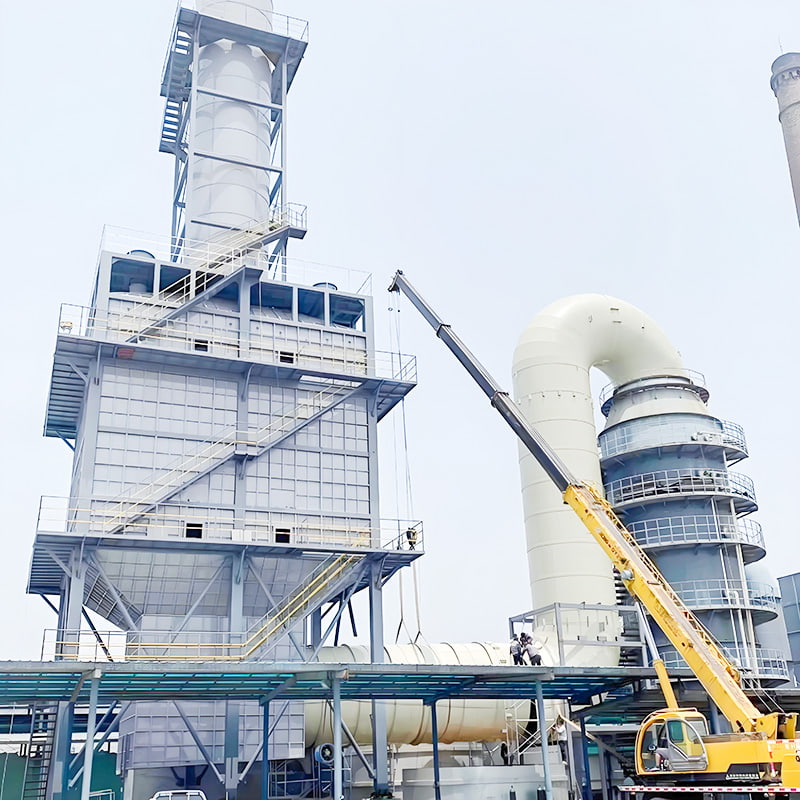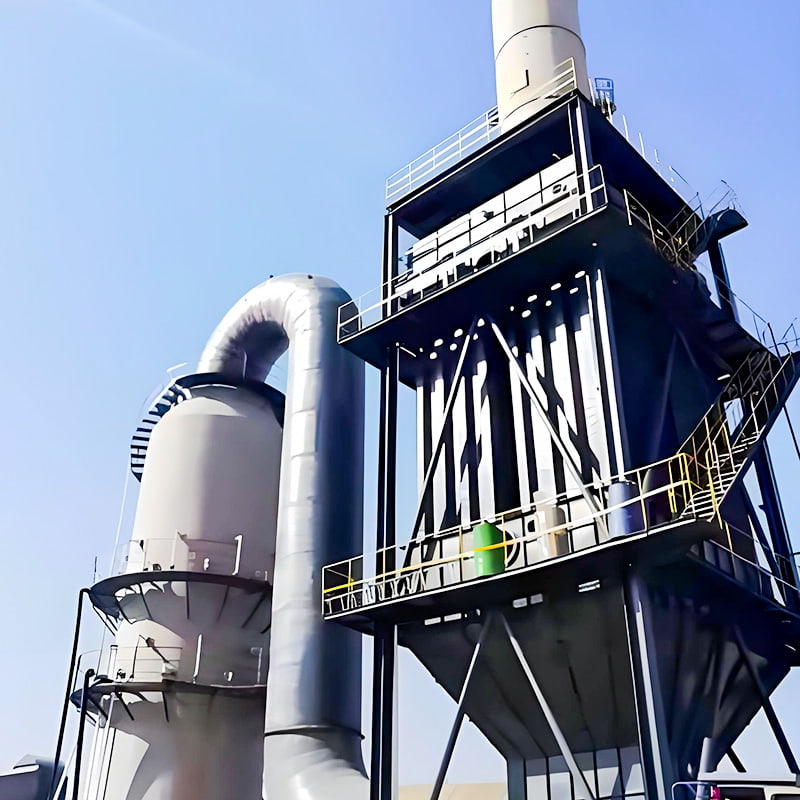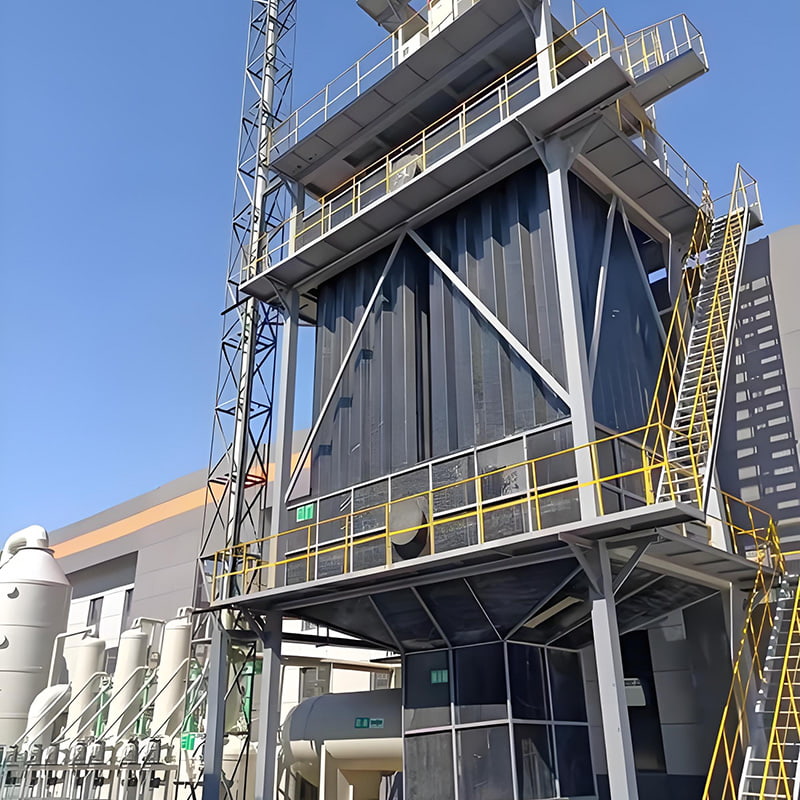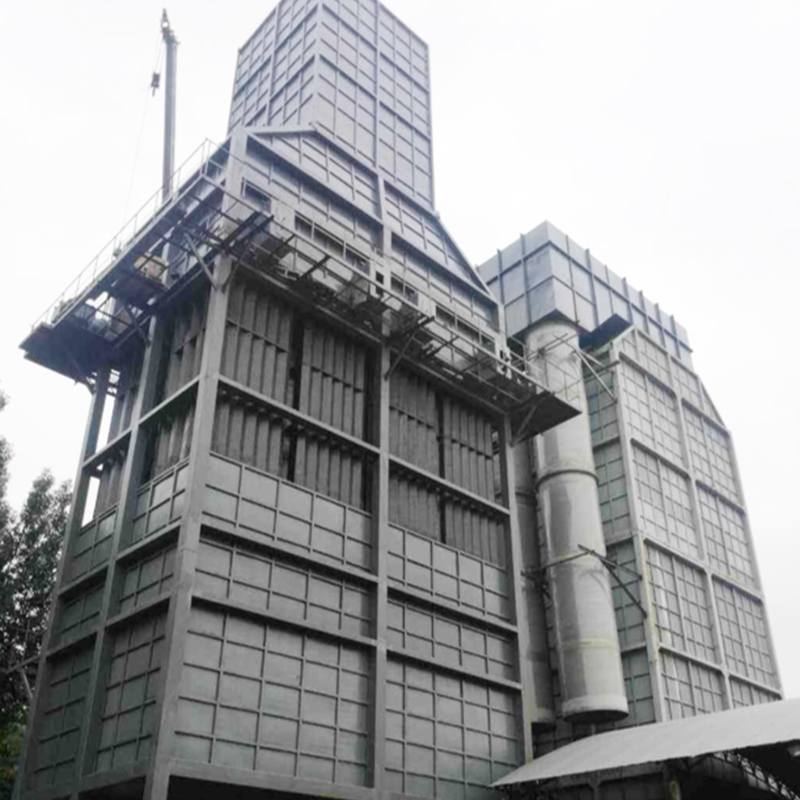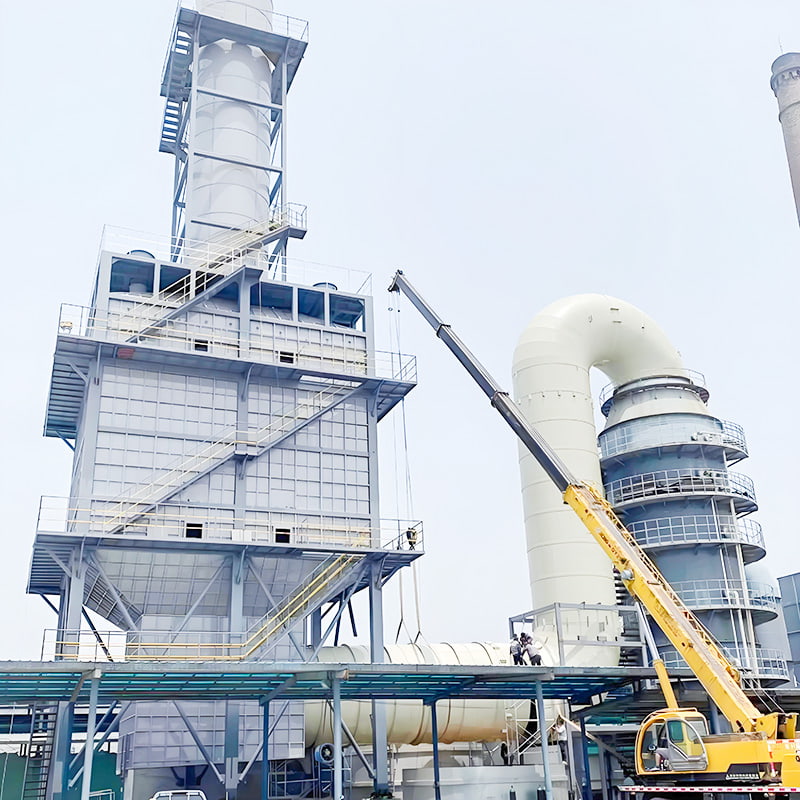Vertical Honeycomb Wet Electrostatic Precipitator
CONTACT US-
How Do Modern Dust Control Systems Enhance Safety and Air Quality?
Introduction Industrial dust has long been a critical concern across sectors such as mining, construction, metal processing, and manufacturing. The inhalation of dust particles, particularly fine particulate matter, may lead to respiratory illnesses, reduced workforce efficiency,...
-
A Comprehensive Guide to Maintaining and Optimizing Dust Control Systems
Introduction In industrial operations, maintaining air quality and minimizing particulate matter is critical for ensuring both environmental compliance and worker safety. A dust control system serves as a cornerstone for achieving these objectives. From heavy manufacturing facili...
-
What Is a Dust Control System? Key Functions and Industry Applications Explained
Introduction A dust control system is a critical solution in industrial and commercial environments to manage and mitigate airborne particulate matter. With increasing awareness of occupational health, environmental regulations, and operational efficiency, industries are adopting...
Can Wet Electrostatic Precipitators Truly Solve Flue Gas Emission Problems?
The Evolution of Air Pollution Control: From Mechanical to Electrostatic
To appreciate the significance of the vertical honeycomb wet electrostatic precipitator, it’s helpful to understand the evolution of air pollution control technologies. For decades, industries primarily relied on crude and often inefficient mechanical methods to remove pollutants from their flue gas streams. Simple cyclones and baghouses were effective for capturing coarse dust, but they struggled to handle the fine particulate matter that poses the greatest risk to both human health and the environment. These tiny particles, often referred to as PM2.5, are small enough to penetrate deep into the lungs and even enter the bloodstream, contributing to serious respiratory and cardiovascular diseases.
The development of dry electrostatic precipitators (ESPs) marked a major technological leap. By using high-voltage electric fields, these devices could charge and collect a wider range of particles, including some of the finer ones. However, dry ESPs have their limitations. They are highly sensitive to variations in flue gas temperature and composition, and they struggle with sticky or highly resistive dust. Furthermore, the reliance on mechanical rapping to clean the electrodes creates a risk of re-entrainment, where a portion of the collected dust is knocked back into the gas stream, reducing overall efficiency.
This is where the wet electrostatic precipitator (WESP) enters the picture, offering a superior solution for specific applications. By combining the principles of electrostatic precipitation with a wet scrubbing process, WESPs are designed to handle flue gas with high moisture content and sticky dust. They excel at capturing sub-micron particles, aerosols, and acid mist, which are notoriously difficult for other technologies to handle. The continuous water film on the collection electrodes not only prevents re-entrainment but also absorbs water-soluble pollutants, providing an additional layer of purification. This synergy of electrostatic force and wet scrubbing makes the WESP a powerful tool for achieving ultra-low emission standards.
A Closer Look at the Vertical Honeycomb Design: Why It’s a Game-Changer
While standard WESPs offer a clear advantage, the vertical honeycomb wet electrostatic precipitator represents a further refinement of this technology. The innovation lies in its unique hexagonal honeycomb anode tube structure. Unlike traditional plate or circular tube designs, this configuration maximizes the collection surface area within a compact footprint. The hexagonal shape ensures that the electrostatic field is distributed with remarkable uniformity, which is critical for effective particulate capture.
The heart of this design is the strategic pairing of the honeycomb anode tubes with a specially engineered spiral cathode line. The spiral shape is not arbitrary; it is designed to ensure that the discharge points maintain an equal distance from the majority of the inner surfaces of the hexagonal anode tubes. This geometric precision ensures an exceptionally stable and efficient corona discharge, which is critical for charging particulate matter effectively. The charged particles are then irresistibly drawn to the wetted honeycomb walls, where they are trapped in a continuous, flowing water film. This design effectively eliminates the dead zones and non-uniform fields that can plague other designs, leading to a consistently higher removal efficiency, especially for ultra-fine particles.
The Meticulous Process: From Raw Flue Gas to Pristine Emissions
The journey of flue gas through a vertical honeycomb WESP is a carefully orchestrated process. It begins with the introduction of humid flue gas, often coming directly from a wet desulfurization or scrubbing unit, into a gas flow distribution section. This initial step is critical. Without proper distribution, some areas of the precipitator would be overwhelmed with gas while others would be underutilized, leading to decreased overall efficiency. A well-designed distribution system ensures that the gas flow is laminar and uniform as it enters the core electrostatic field.
Once inside the electric field, the magic happens. The high-voltage discharge from the spiral cathode lines creates a powerful negative corona, ionizing the gas molecules and forming a stream of free electrons. These electrons attach to the dust particles in the flue gas, giving them a negative charge. Driven by the strong electric field, these negatively charged particles migrate swiftly towards the positively charged honeycomb anode tubes. Upon contact, they become embedded in the continuously flowing water film.
This continuous washing process is a key differentiator of WESPs. The slurry containing the collected pollutants is drained from the bottom of the unit, completely avoiding the secondary dust pollution that can occur with dry ESPs. This not only results in cleaner air but also simplifies the maintenance and operation of the equipment.
The Added Benefit: Flue Gas Whitening
Beyond its primary function of removing fine particulate matter, the vertical honeycomb WESP offers a valuable secondary benefit: flue gas whitening. The visual impact of a large, white plume of smoke from a factory chimney can be a source of public concern and a sign of potential pollution. However, much of this visible plume is not solid pollution but rather water vapor condensing as the hot, humid flue gas exits the chimney and mixes with the colder ambient air.
The WESP, with its cool, wetted surfaces, acts as a heat exchanger, significantly lowering the temperature of the flue gas and condensing a substantial amount of its water vapor. As a result, the discharged gas is not only cleaner but also has a much lower moisture content. This reduction in condensed water vapor effectively reduces or eliminates the visible white plume, improving the aesthetic quality of the emissions and the public perception of the facility. For companies striving for a positive public image and true environmental responsibility, this “whitening” effect is a significant bonus.
The performance metrics of this technology are a testament to its effectiveness. It can handle inlet dust concentrations of up to 30mg/Nm³ and consistently achieve outlet concentrations below 5mg/Nm³, a level that often surpasses the most stringent ultra-low emission standards. The ability to operate effectively with gas temperatures below 100℃ makes it a versatile solution for a wide range of industrial applications.
Who Benefits from This Technology? A Look at Key Industries and Our Role
The applications for the vertical honeycomb wet electrostatic precipitator are broad and vital, extending across industries where fine particulate and aerosol emissions are a primary concern.
In the power industry, particularly in coal-fired power plants, WESPs serve as the final, crucial polishing step after wet desulfurization. While desulfurization systems effectively remove sulfur dioxide, they can sometimes leave behind a significant amount of fine particulate matter and acid mist. The WESP captures these remaining pollutants, ensuring the plant meets and exceeds the most stringent emission limits.
The iron and steel industry, with its complex processes like sintering and blast furnaces, generates flue gas with difficult-to-handle particles. The sticky and corrosive nature of these pollutants makes them ideal candidates for treatment by a WESP. The technology helps steel plants reduce their environmental footprint and comply with regulations, driving their transition towards cleaner, more sustainable operations.
In the cement industry, a major source of fine dust emissions, the WESP offers a powerful solution for treating kiln tail gas. By integrating it into their existing pollution control systems, cement manufacturers can dramatically reduce their particulate emissions, contributing to cleaner air in surrounding communities. This is where companies like Anhui Tiankang Environmental Technology Co., Ltd have carved a niche, providing customized and highly effective WESP solutions that help their clients in the cement sector and other heavy industries achieve remarkable emission reductions. Our focus on leveraging this advanced technology ensures that our clients are not just meeting regulatory benchmarks but setting new standards for environmental performance.
Beyond these heavy industries, the technology is also highly applicable in chemical processing and waste incineration plants, where flue gas often contains a complex mix of fine particles, heavy metals, and acid gases. The WESP’s ability to handle these diverse pollutants simultaneously makes it a highly valuable and versatile tool for synergistic pollution control.
Conclusion: A Stepping Stone to a Cleaner Future
So, can wet electrostatic precipitators truly solve all flue gas emission problems? The answer is nuanced. While no single technology can be a cure-all for every environmental challenge, the vertical honeycomb wet electrostatic precipitator represents a major leap forward in air pollution control. It addresses the critical issue of fine particulate matter, offers a reliable solution for high-humidity and sticky dust environments, and provides the added benefit of flue gas whitening.
For companies striving to meet the demands of a cleaner, more regulated world, this technology is not just an option—it is an essential component of a modern, responsible environmental strategy. It signifies a shift from merely complying with regulations to actively pursuing excellence in environmental stewardship. The journey toward a future free of industrial air pollution is long, but with innovations like the vertical honeycomb WESP, we are taking firm and decisive steps in the right direction. It is a powerful tool, a testament to human ingenuity, and a promise of cleaner air for generations to come.



 English
English Français
Français عربى
عربى 简体中文
简体中文


